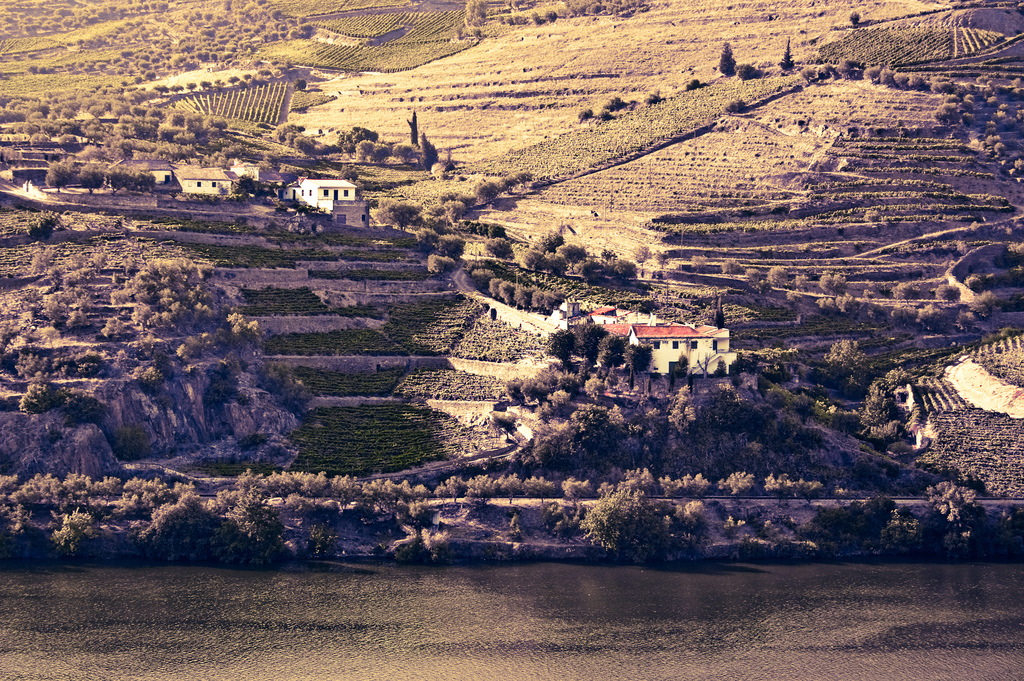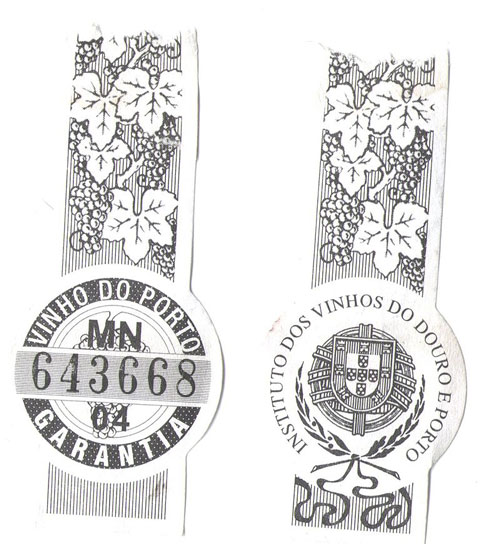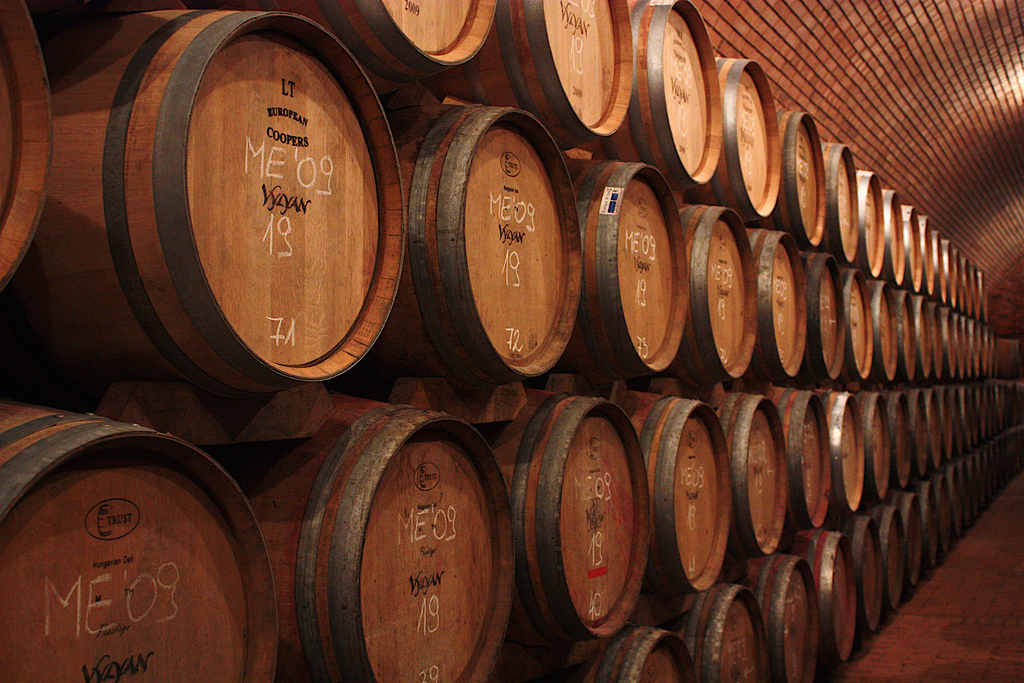A few weeks ago it was Portugal Day, which lead me to ask the question – when you think about the food and drink of Portugal, what comes to mind?
For me it’s port, piri-piri and bacalhau. At the time it seemed easier to write about fortified wine than salted fish or tiny fiery chilli peppers (though it’s not to say I won’t try in future!)
Probably if you’re an alcohol drinker, at some point you’ve had port. You may have even liked it. I know I do. I like it so much that there are large parts of last Christmas that I can’t remember very well…
With this in mind, I jumped on the opportunity to interview Adrian Bridge, of Taylor’s – who is a port expert if ever you’ll find one.
Stuff covered includes wine’s historical significance, what makes port not just another kind of fortified wine, how it’s made and what all the different types are.
Want to bombard your friends with helpful/useless trivia when you next get to drinking a nice glass of ruby? COURSE YOU DO. Read on..

J: In a nutshell, what’s the difference between port and conventional wine, and how is port made? What does the fortification process entail?
A: Port is a fortified wine. It is made like table wine using red or white grapes. During fermentation, a proportion of grape spirit, or brandy is added to the fermenting must to stop fermentation. This retains some of the natural sweetness in the grape, resulting in a wine that is sweet, rich, round and smooth on the palate.
Why does it have to come from the Douro valley? And what makes it different say from English fortified wines? (I think they call those ‘cream?’)
In 1756 the Port wine vineyards in the Douro Valley (Northern Portugal) became the first vineyard area in the world to be demarcated for the production of Port. The area has a unique climate, soil, grape varieties and wine making traditions. The Douro Valley has mountain viticulture with soils that can’t be replicated anywhere else in the world. The word “Port” is fiercely protected (like “Champagne”) as a wine coming from the Douro Valley. Although some countries still use the name in their description, the name is legally restricted within Europe.

What kind of grapes go into making port?
Over 15 different indigenous grape varieties can be used. They include varieties like Touriga Nacional, Touriga Francesa and Tinta Barroca.
You see some pretty old port. I assume it ages really well? Do all varieties age well?
Port can age for decades but decisions about its longevity are taken in the vineyard and in the first 2 years after the harvest. It is then bottle aged for Vintage Ports or wood aged like Tawny or Late Bottled Vintage. A classic Vintage Port can age in bottle for 5 or more decades. At Taylor’s we’ve just released 1964 Single Harvest Port which has been aged in wood for 5 decades.
What’s the deal with ‘crusted’ and unfiltered port?
“Crusted” and “unfiltered” Ports have been bottled without filtration and may throw a crust or sediment in the bottle. They will improve further in bottle age but may require decanting prior to service.
It’s clearly quite popular around here (being one of the first drinks I remember people drinking when I was very young) – do the Portuguese enjoy it too?
Yes the Portuguese enjoy Port and are particularly fond of Aged Tawny served chilled or port, ice and tonic instead of G & T. There’s also a growing trend in the south of Portugal for Pink Port in the summer which again should be served ice cold, on the rocks, or as the base ingredient for a number of cocktails.
Speaking of that, why is it so popular here? I remember hearing it goes back to our old alliance with the Portuguese, and those bottles of ‘sack’ you here referred to in Shakespeare, etc, were an early form of port?
In 1667 Colbert, the first minister of Louis XIV, embarked on a series of measures to restrict the import of English goods into France. This provoked Charles II of England to increase the duty on French wines, later forbidding their import altogether. The English wine trade had to seek alternative sources of supply and looked to Portugal for their robust, full bodied wines from the steep and rocky hillsides of the upper Douro Valley, behind the Marão mountains where Port is made today.

In 1703 the signing of the Methuen Treaty between England and Portugal gave further encouragement to the Port shippers, establishing that Portuguese wines imported into England should pay one third less duty than those from France. English and Scottish merchants were not alone in trading in Port wine. Dutch and German families were also involved in the business. However, the overwhelming importance of the English market meant that the British merchants predominated.
Asides from it’s wonderful sweetness, what else does port bring to the tastebuds that make it special? What’s a good ‘entry level’ port for a new consumer?
Purity of fruit, a luscious palate and extraordinary depth of flavour. It is also very versatile with a wide range of food flavours including difficult foods like dark chocolate. Once opened, it can be kept for about a month (Ruby / LBVs) or 6 weeks (Tawny Port). Vintage on the other hand should be treated like a red wine and consumed within 36 hours of opening.
An entry level Port would be Taylor’s First Estate which has a wonderful concentrated palate crammed with blackcurrant, plums and liquorice. It has a luscious texture supported by firm tannins but restrained elegance. It goes beautifully with cheese and dark chocolate and is well priced at £12 a bottle.
Asides from pairing with cheese and crackers, what are some good uses for port, in your opinion? I saw a port cocktail the other day…
Aged Tawny Ports are the most versatile and delicious served chilled. 10 and 20 Year Old Tawnies can be served with fruit puddings, crème brulée, almond cake and ice cream. Alternatively try Green & Blacks 70% Dark with an LBV.
Croft Pink was the first rose Port to be introduced into the market pioneered by Croft Port in 2008. It can be served on its own well chilled, on the rocks or as a punch or a base ingredient in cocktails.
What’s the number on the official guarantee label mean?
This is issued by the IVDP (Instituto dos Vinhos do Douro e Porto) as a guarantee of quality. All Ports must be approved by this generic organisation before it can be called “Port”. Each seal has an individual number on it so that any faults can be traced back to its origins.

Could you explain the difference between ruby and tawny port. Tawny port is a slightly different colour and is quite often older, right?
Ruby and Tawny Ports are both wood aged Ports. Both are blended wines. The difference is the ageing process. Ruby is aged in large wooden vats and bottled around 3 years old. Tawny Ports spend at least 6-7 years in small wooden barrels.
At Taylor’s, we have the most extensive selection of cask aged Ports (or Tawny) of any other shipper. These Ports can spend decades in wood before being bottled. Over time, the Port loses its colour during maturation. The older the Port, the lighter the colour.
